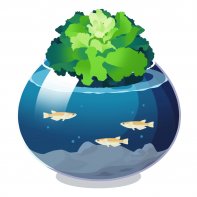
Back to Basics: What is Aquaponics?
A review and basic understanding of the process of aquaponics
What is aquaponics? For those who are already growing with AquaGrove, the answer is easy, but the truth is that many people have still not heard of or learned about aquaponics. When I receive this question at events or in the community, I usually start with “if you have heard of hydroponics, then you are halfway there.” The simplest answer I can give is that aquaponics is hydroponics, but fish (aquaculture) are used to balance the system, rather than additional products or solutions.
The history of aquaponics goes as far back as the Aztecs and rice cultivation in South China. Aquaponics can be traced back to the Aztec Indians who raised plants on rafts on the surface of a lake around 1000 AD, however, as modern agricultural technology, it is still in its infancy. Aquaculture and Hydroponics are relatively new industries, only gaining serious momentum over the past half century. The idea of combining the two is even more recent and has only been made possible as our techniques for hydroponic farming and aquaculture have improved.
Aquaculture was traditionally carried out in large ponds, which consumed both large quantities of land and water. To address this issue, aquaculture specialists moved into Recirculating Aquaculture Systems (RAS). In the early stages of researching RAS, experiments were carried out to determine how efficient aquatic plants were at filtering and consuming the nutrients found in wastewater from aquaculture farms. This research tested also terrestrial plants, and these proved to be an effective method for water purification. The noted benefits of combining both technologies led to the combination of the aquaculture and hydroponics as an integrated industry.
Through the combination of aquaculture and hydroponics, aquaponics developed and is a method for growing fish and plants together in a symbiotic system. Through a sustainable and cyclical system, the plants keep the water “clean” for the fish to grow, while the fish fertilize the plants. Both fish life and plant life are interdependent, and with the proper balance each will provide the nutrients and conditions for the other to grow and thrive.
The cycle is simple - As the fish are fed, they naturally produce waste; this waste is very rich in nitrogen, in the form of ammonia, and plants need nitrogen to grow. The nitrogen of the ammonia is made available to the plants through naturally occurring nitrifying bacteria that turn the ammonia into nitrate, which works as perfect plant food. Therefore, in an aquaponic system, the fish waste is used as free fertilizer for plants which then absorb the nitrogen from the water and clean the water that goes back to the fish. In aquaponics, healthy fish are the key to healthy plants, providing a sustainable, continuous, and organic life and food source.
To learn more about aquaponics and how to begin your own sustainable and organic garden, contact AquaGrove.
